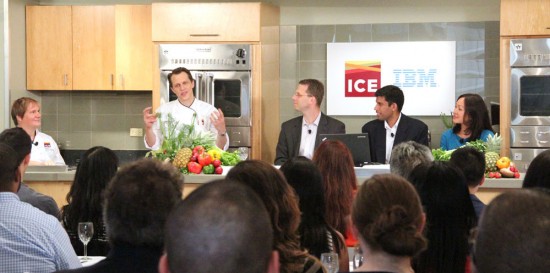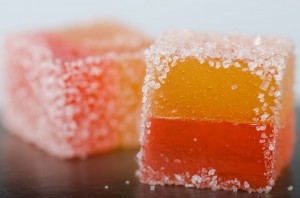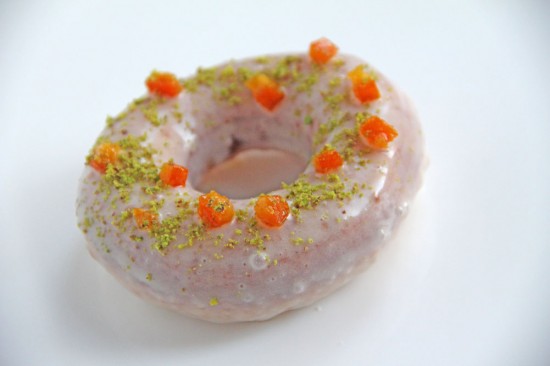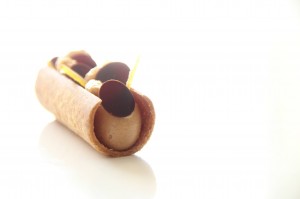As a chef who interacts with a wide range of cooks—students, professionals, amateurs, food writers and product developers—I’m frequently asked about trends. I find the question interesting, but also very difficult to answer. The speed at which we now communicate allows ideas to disseminate faster than ever, which means trends have a tendency to flash and fizzle at an increasing rate. Moreover, the staying power and influence of trends is compromised by the fact that the food world consists of so many diverse and specialized communities. What takes hold in one area (pastry in fine dining restaurants, for example) may not penetrate very far into another (retail pastry shops and bakeries). Yet for those trends that do grab hold, they typically manifest in one of three areas: ingredients, techniques and presentation.

When it comes to stable trends that are here to stay, seasonality, first and foremost, dictates the raw materials we showcase. Following the seasons provides diners with the chance to discover exotic ingredients from far-flung places or special artisan products that represent the height of quality or scarcity. Regardless of whether a chef’s focus is restricted to local products or allows for foreign ingredients, the pantries we draw from continue to expand and diversify. The constant search for the next “hot” ingredient not only stimulates constant need for supply, but also generates curiosity and demand on the part of the dining public. The risk of over-exposure (consider, for example, the prevalence of Brussels sprouts on restaurant menus) is high, but the best and most versatile products eventually find a permanent home in our repertoire.

In addition, whether “new” or “recycled” from the past, the current food landscape is driven by culinary methods and techniques. This area in particular fascinates me, as trends in technique often build off of previous advances, representing a true evolution of craft. What once was new and foreign—for example, sous vide cooking or the use of hydrocolloids—has over time become absorbed into the skillset of the average professional. In such cases, the decision of when not to apply these new additions to the technical canon is just as important as when we to apply them. Yet technique is not always a manifestation of innovation; we also see a swing of the pendulum back to traditional or “lost” techniques. By digging deeper into our past, we often resurrect trend-worthy artisanal products like chocolate, charcuterie and bread. For me, the real excitement lies where the cycles of old and the new intersect, applying modern tools to classic methods (or vice versa).

Of all the food-borne trends, however, I see the art of presentation as a parallel to the ever-changing world of fashion, where styles ebb and flow with the times. I find it interesting to chart the evolution of the plated dessert, for example, in order to understand the ever-changing trends in pastry design. One might argue that the emergence of the plated dessert is a fairly recent development when fine dining restaurants abandoned the dessert cart for creative freedom provided by the individual plate. Soon, what surely began as mere miniaturized versions of dessert cart staples quickly developed into multi-component compositions that forever changed the way pastry kitchens are designed and operated. Trendy tools and equipment also inspire presentation; for example, when introduced in the 1990s, silicon molds of all shapes and sizes allowed for the hard, geometric lines that typified an “architectural” plating style. These complex structures of sweetness then began to deconstruct, retreating to the surface of the plate and toward the current abstract style, which focuses on balance and contrasts in flavor, texture, and temperature. What’s the next trend in plated desserts? Perhaps we’ll see a cyclical shift away from deconstruction and back toward more compact presentations.

In the end, the impact of food trends provides opportunities for the craftsman to evolve and innovate, so I find it vital to keep my finger on the pulse of emerging products, techniques and styles. However, I also take care to avoid the pressure to constantly redefine my own style in the pursuit of “staying with the pack.” In my kitchen, trends represent a means toward discovery and personal growth. I absorb and play off those elements which align with my own sensibilities and feel free to disregard those that do not. Having watched the never ending cycle of trends over many years in the kitchen, one thing has remained clear: maintaining a grasp on the basic fundamentals will never go out of style!
Want to study with Chef Michael? Click here for a list of his upcoming advanced pastry workshops.




